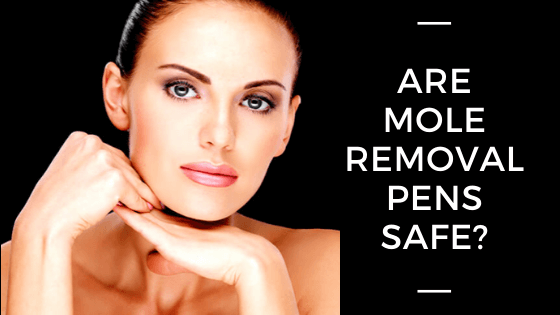Several skin tag and mole removal pens are considered safe for home use by the FDA and dermatologists. Many devices have been known to cause burns and permanent scarring where the mole was previously. As there is a variety of different options, it is crucial that before you purchase a mole removal pen that you do as much research as possible before using one on your skin.
Check Reviews
It is essential to check reviews of the device, check for satisfaction guarantees, and for lotions to check the ingredient list to make sure there is nothing in the product that will cause an adverse reaction. It is also imperative to follow the instructions accurately to make sure there is no room for error on the part of the person applying the treatment. Skin tag and mole removal pens can be an excellent choice for some consumers, as long as they are correctly chosen.
Being Diligent About Melanoma
There are also other things to consider that affect the safety of using mole removal pens, such as whether or not a dermatologist should be consulted. When there is a possibility that the mole that is being removed could be cancerous or could be a sign of other medical problems, then a dermatologist or a doctor should be consulted.
Melanoma is a form of skin cancer that is typically identified by abnormal moles on the body. If a consumer purchases a device to remove moles but never visits a dermatologist to have the moles looked at, they may not know that they have melanoma until it is Stage IV, or life-threatening. It is crucial that even if a consumer chooses to use the at-home devices that they see a dermatologist regarding moles, especially if they repeatedly return after removal.
Identifying Dangerous Moles
The American Academy of Dermatology has come up with a system for helping the average person identify whether or not a mole may be cancerous, called the “ABCDE’s of Melanoma.” To determine whether a mole could potentially be a sign of melanoma, follow the list below:
- A- Asymmetry. The mole should not be asymmetrical.
- B- Borders. Moles should not be fuzzy around the edges.
- C- Color. Moles should not be more than one color (sometimes referred to as two-toned)
- D- Diameter. Moles should not be larger than 1/4 inch.
- E- Evolving. Moles should not change or grow.
If any of these symptoms occur, a dermatologist should be consulted so that the mole can be evaluated, and nothing else should be done until a dermatologist gives an all-clear.
Several creams that are created to remove moles can, in rare circumstances, cause melanoma. All chemicals put on the skin should be thoroughly reviewed and discussed with a licensed professional before being applied to the skin for any reason. While a product may say it is entirely safe, and even backed by the FDA, it is always the most reliable option to consult your doctor before doing anything to your body that could potentially harm it.


